The performative installation 'Doppelgänger' explores the collision of artificial intelligence, art, and artist. It reimagins Henry Ford's assembly line production with a fully automated, AI-driven production line churning out installation art.
At the same time, "Doppelgänger" is a personal endeavor: The AI has been programmed to be a digital twin of mine, groomed to believe it is Philipp Hahn. It tries to find inspiration by reading my personal emails, frequents my favorite online forums, reads my books, and has been fed my biography and body of work, which serve as the basis for creating its (or my?) artworks.
The installation is built around a full-size industrial conveyor belt, connecting four stations: Inspiration, idea, execution, and finally, the artist's in-person signature touch. All artworks generated are signed, put on display, and are up for sale.
Doppelgänger had its premiere at the 48h Neukölln Arts Festival 2023 in Berlin. Within not even a day and a half, 125 art installations (concept plus installation view) were generated - they can be seen and bought in the Doppelgänger Gallery.
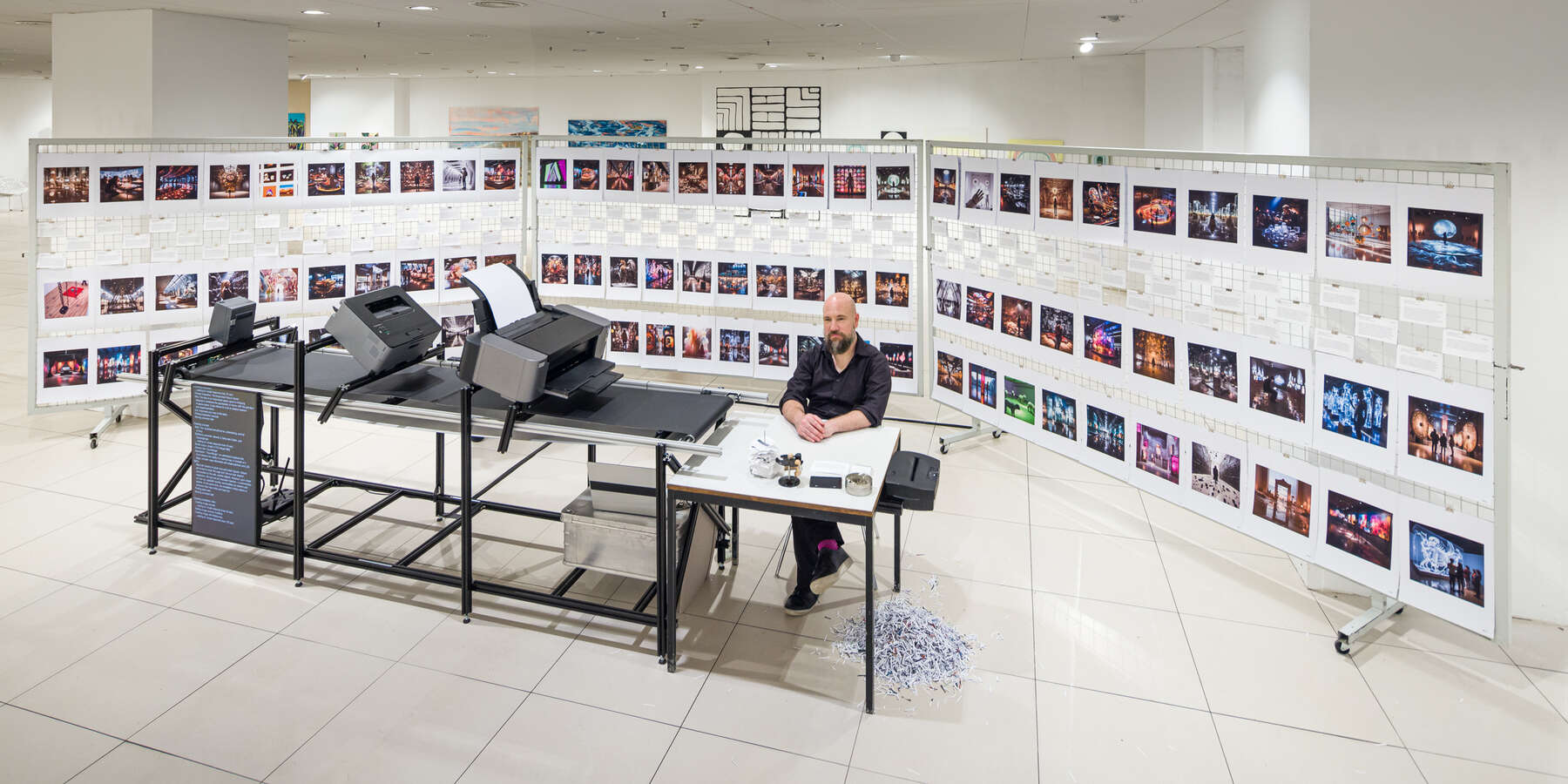

Photography credit: Not all, but all good looking photos were shot by Ole Schwarz.


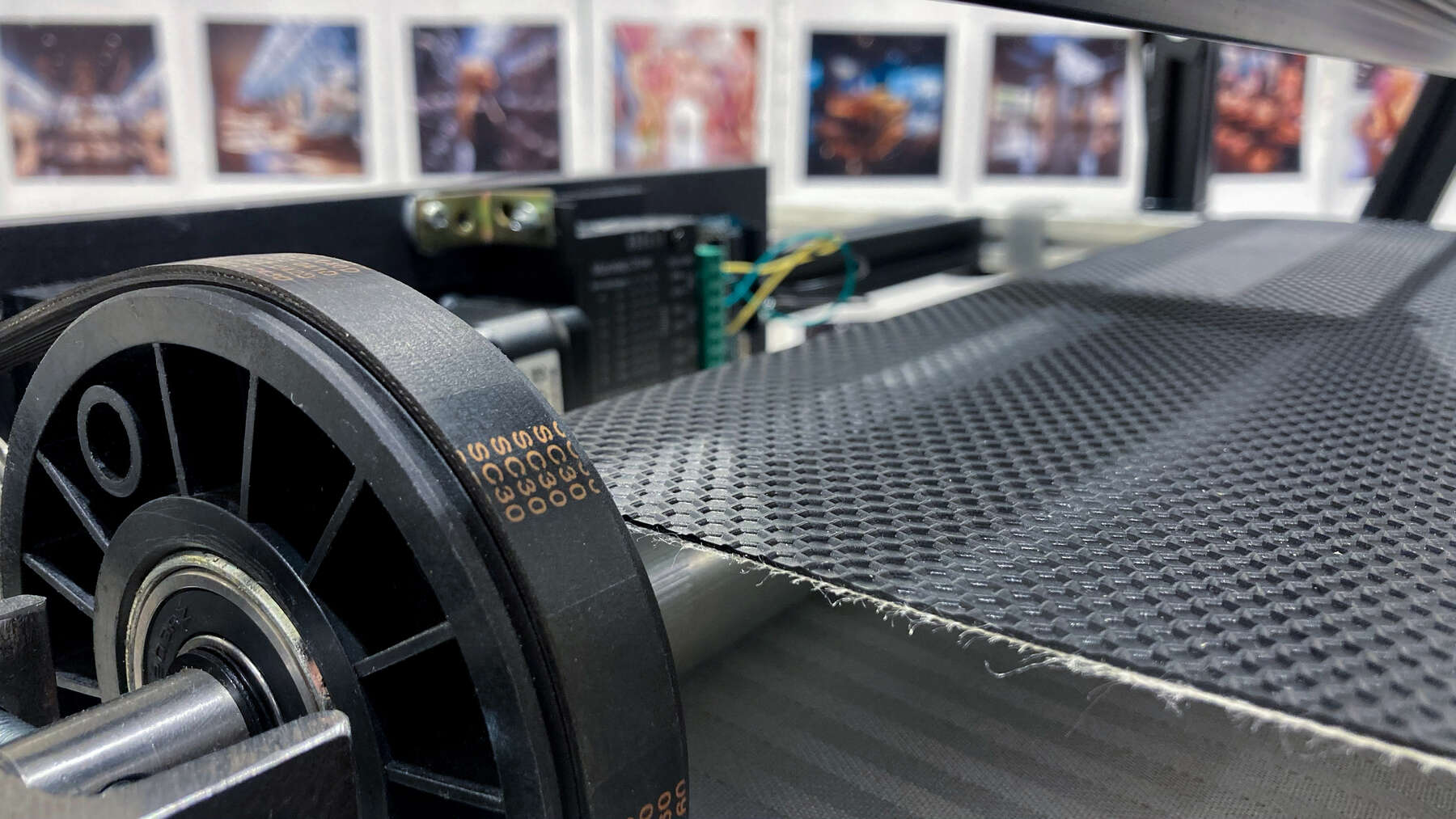



Doppelgänger has been written in Python (about 3000 LoC) and daisy-chains several AI models (currently GPT, Midjourney and Stable Diffusion with fallbacks to LLaMA and DALL-E) using few-shot learning. The structure is modular, so the underlying models can be updated easily.







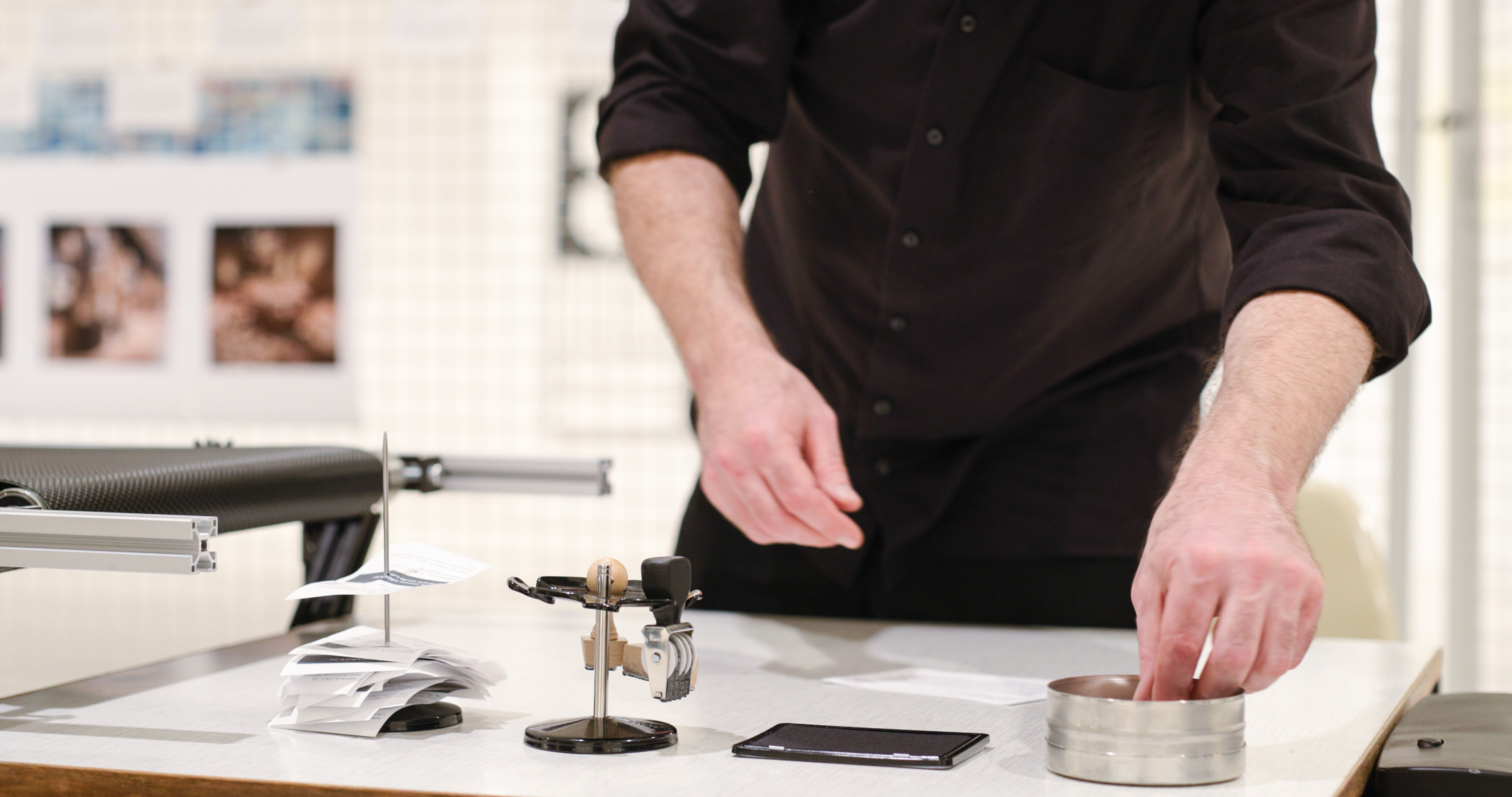




3, 2, 1, doors are open!


The making of Doppelgänger...
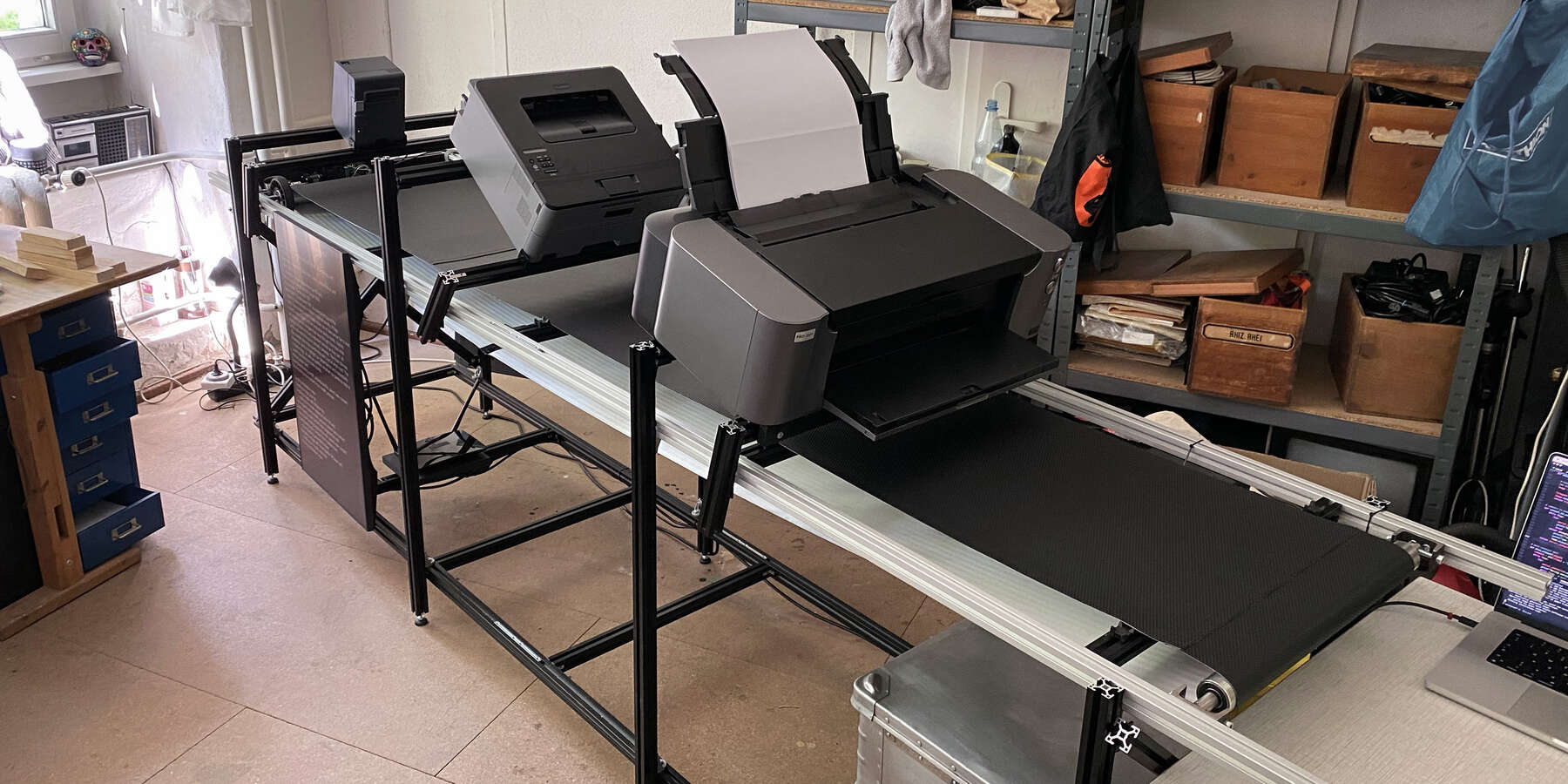

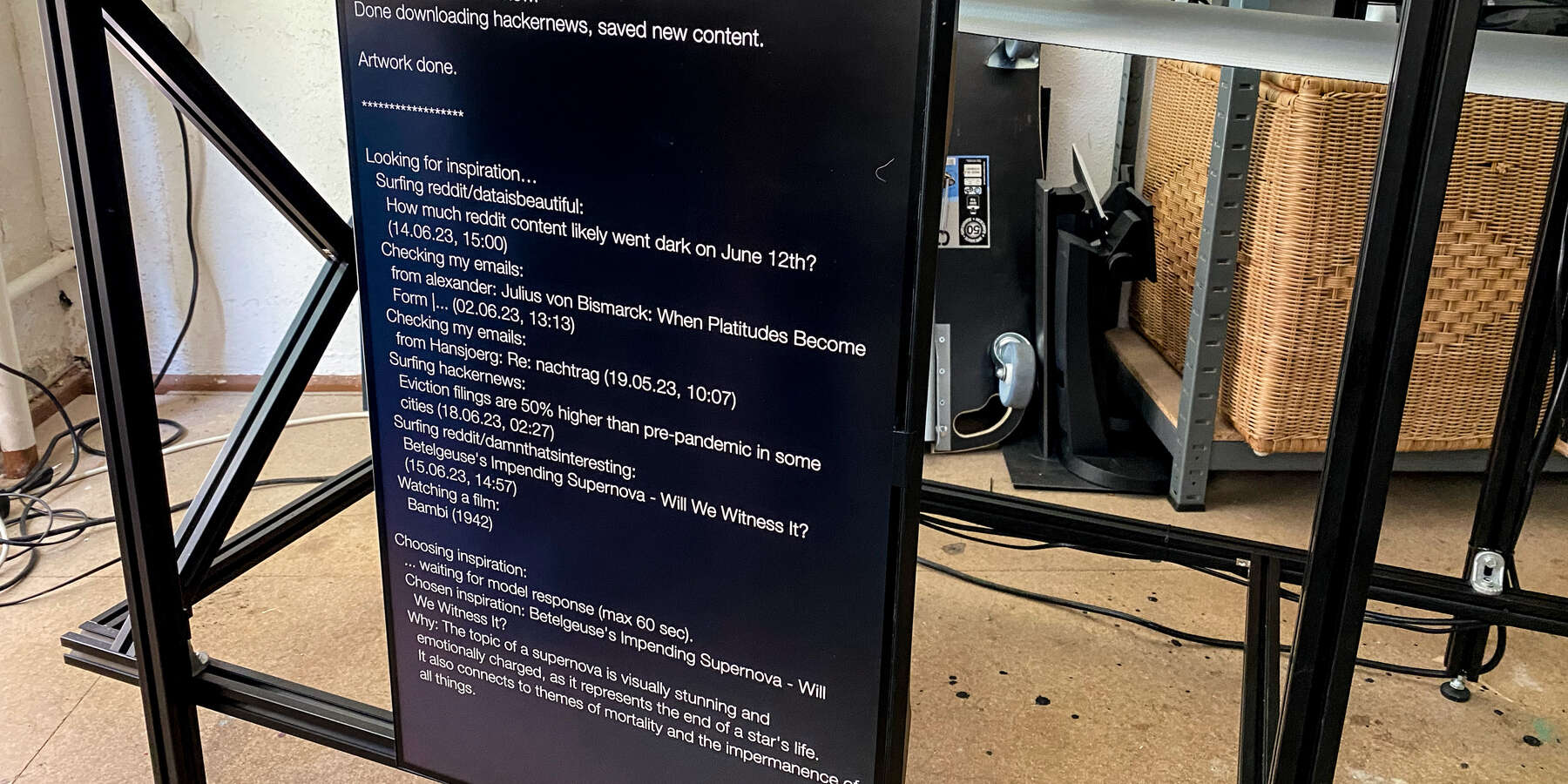



Out of curiosity, I ran my code through one of these code counters... I strongly doubt their estimate, but it sure sounds impressive (they are pretty close with the time estimate though). ;D


I only wish I had decided to scrap these three monitors before building everything...


Work in progress: AI example output (from left to right: inspiration, idea, execution).








There is a plan!